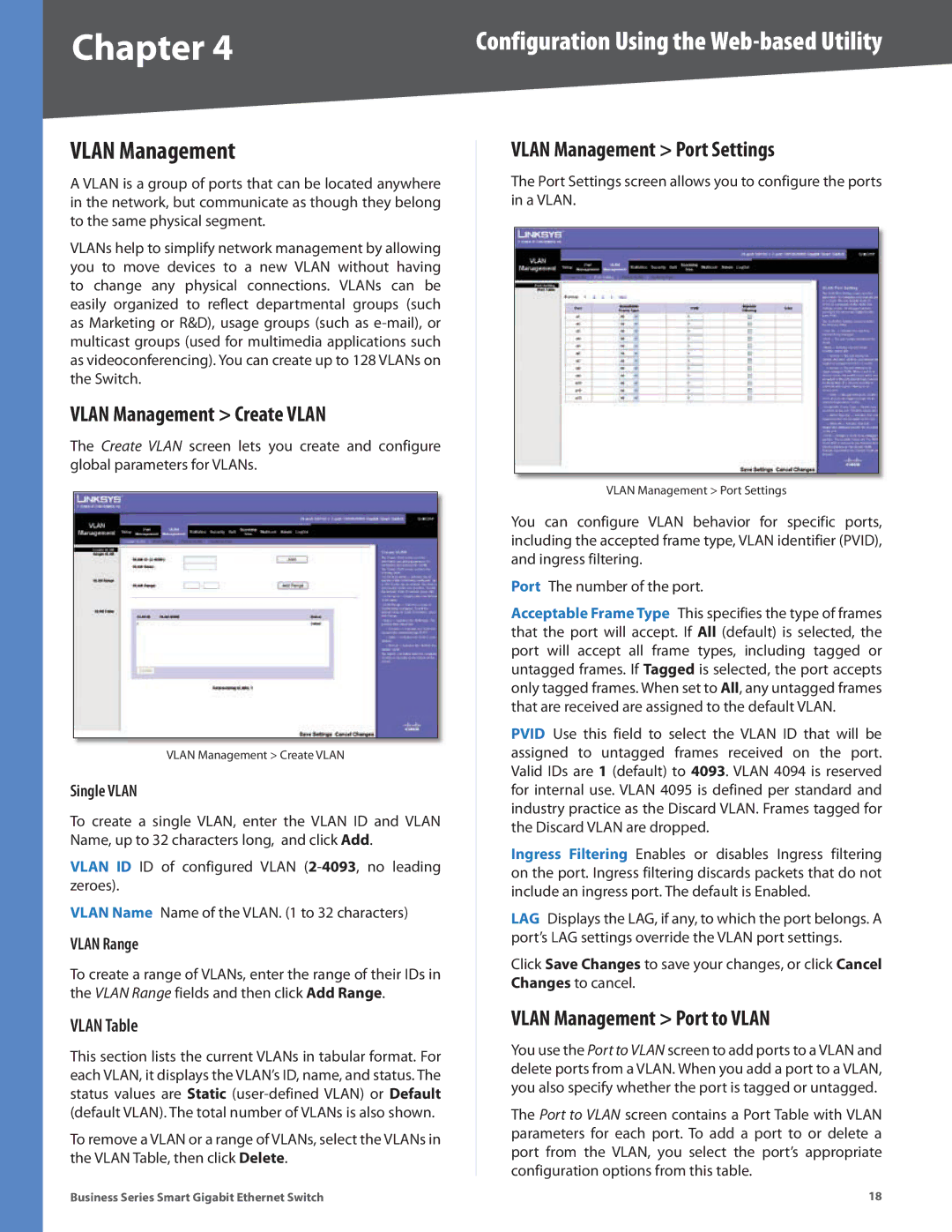
Chapter 4 | Configuration Using the |
VLAN Management
A VLAN is a group of ports that can be located anywhere in the network, but communicate as though they belong to the same physical segment.
VLANs help to simplify network management by allowing you to move devices to a new VLAN without having to change any physical connections. VLANs can be easily organized to reflect departmental groups (such as Marketing or R&D), usage groups (such as
VLAN Management > Create VLAN
The Create VLAN screen lets you create and configure global parameters for VLANs.
VLAN Management > Create VLAN
Single VLAN
To create a single VLAN, enter the VLAN ID and VLAN Name, up to 32 characters long, and click Add.
VLAN ID ID of configured VLAN
VLAN Name Name of the VLAN. (1 to 32 characters)
VLAN Range
To create a range of VLANs, enter the range of their IDs in the VLAN Range fields and then click Add Range.
VLAN Table
This section lists the current VLANs in tabular format. For each VLAN, it displays the VLAN’s ID, name, and status. The status values are Static
To remove a VLAN or a range of VLANs, select the VLANs in the VLAN Table, then click Delete.
VLAN Management > Port Settings
The Port Settings screen allows you to configure the ports in a VLAN.
VLAN Management > Port Settings
You can configure VLAN behavior for specific ports, including the accepted frame type, VLAN identifier (PVID), and ingress filtering.
Port The number of the port.
Acceptable Frame Type This specifies the type of frames that the port will accept. If All (default) is selected, the port will accept all frame types, including tagged or untagged frames. If Tagged is selected, the port accepts only tagged frames. When set to All, any untagged frames that are received are assigned to the default VLAN.
PVID Use this field to select the VLAN ID that will be assigned to untagged frames received on the port. Valid IDs are 1 (default) to 4093. VLAN 4094 is reserved for internal use. VLAN 4095 is defined per standard and industry practice as the Discard VLAN. Frames tagged for the Discard VLAN are dropped.
Ingress Filtering Enables or disables Ingress filtering on the port. Ingress filtering discards packets that do not include an ingress port. The default is Enabled.
LAG Displays the LAG, if any, to which the port belongs. A port’s LAG settings override the VLAN port settings.
Click Save Changes to save your changes, or click Cancel Changes to cancel.
VLAN Management > Port to VLAN
You use the Port to VLAN screen to add ports to a VLAN and delete ports from a VLAN. When you add a port to a VLAN, you also specify whether the port is tagged or untagged.
The Port to VLAN screen contains a Port Table with VLAN parameters for each port. To add a port to or delete a port from the VLAN, you select the port’s appropriate configuration options from this table.
Business Series Smart Gigabit Ethernet Switch | 18 |
